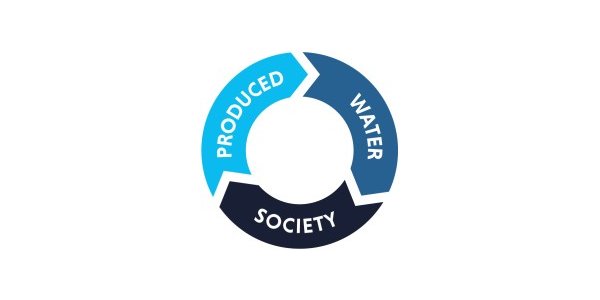The multitudinous aspects of the produced water that’s taken from oil and natural gas wells will be discussed in detail in a “Navigating the Great Reset” seminar Aug. 16 and 17 at The Horseshoe Arena & Pavilion in south-central Midland just off the north side of I-20.
After breakfast and registration, the event will begin with Texas Railroad Commissioner Jim Wright detailing “Oil, Water, Earthquakes and Opportunities” at 8:15 a.m. Aug. 16, followed by Texas Pacific Water Resources Executive Vice President Robert Crain of Midland and others reviewing “Produced Water Recycling in a Changing Regulatory Era.”
Fees are $850 for members of the sponsoring Produced Water Society, $995 for non-members and $650 for a day pass. There are lesser fees for virtual attendance.
Register on the group’s website at producedwatersociety.com, or call its Austin office at 512-716-8536. PWS President Steve Coffee will welcome the participants.
Produced water is extracted from oil and gas wells or separated from oil, condensate or gas after extraction and much of the seminar will deal with constructive alternatives to re-injecting it into the earth with saltwater disposal wells.
West Texas National Bank Marketing Vice President Jonna Smoot of Midland is interested because she helped start the related Permian Basin Water in Energy Conferences held in 2018, ’19, ’20 and she chaired the one in February.
“The energy industry needs to educate the public on how much produced water is being used for energy as opposed to agriculture,” Smoot said. “There has been a lot of bad press about fracking. Clean water goes down the hole and produced water comes out and we need to make sure it doesn’t just go back down a hole with disposal wells, which are believed to be causing the earthquakes in West Texas.
“The industry has been a good steward of our water and it wants to do an even better job of finding different ways to monetize the produced water so that it has a beneficial re-use. It’s about safety and best practices.”
Smoot said the nation’s 900,000 oil and gas wells generate 21 billion barrels of produced water each year. She said clean water is used for fracking because it gets the best results.
A 10:15 a.m. Aug. 16 panel discussion on “State of the Consortiums: What Are Texas and New Mexico Stakeholders Working On?” will feature U.S. Department of Energy official Markus Drouven, Rusty Smith of the Texas Produced Water Consortium, Mike Hightower of the New Mexico Produced Water Research Consortium and former ConocoPhilips executive Karen Work.
With 64 speakers from throughout the nation, the seminar will also have Laura Capper of the EnergyMakers Advisory Group from Houston, Rob Bryant of B3 Insight from Denver, Nathan Alleman of ALL Consulting from Tulsa and Kyle Murray of Murray GeoConsulting from Norman, Okla., talking about “Feeling the Seismic Pressure” at 1 p.m. on the first day.
Another hot topic, “The What, Where, How and Why of Environmental, Social and Governance at $100-Per-Barrel Oil” will be taken up at 3:15 p.m. Aug. 16 by Kylie Wright of B3 Insight, Mark Patton of Hydrozonix from Odessa, Brian Bohm of the Apache Corp. and Sharlene Leurig of Texas Water Trade from Austin.
Midland Mayor Patrick Payton will open the Aug. 17 program, followed by Rick McCurdy of Select Energy Services from Houston and others discussing “Produced Water’s Role in the Circular Economy” at 8:45 a.m. and UTPB Chemical Engineering Professor Ubadire Onyemaobi to be among those reviewing “Treatment Focus: Let’s Get Physical” an hour later.
The last presentation will be on “Treatment Focus: Chemical Concerns” from 3:15-4:15 p.m. Aug. 17 with Steve Wood of the Catawater Group of Companies from Plano detailing “The Use of Organic Chemistry as a Pre-Process Conditioner for Produced Water Treatment,” Tanhee Galindo of GeoKimika Oil & Gas from Midland discussing “Monitoring the Corrisive Effects of PW and Treatment Chemicals on Frac Iron” and Greg Simpson of PureLine Treatment Systems from Bensenville, Ill., explaining “Ferrate vs. Chlorine Dioxide for Sulfide Control.”




